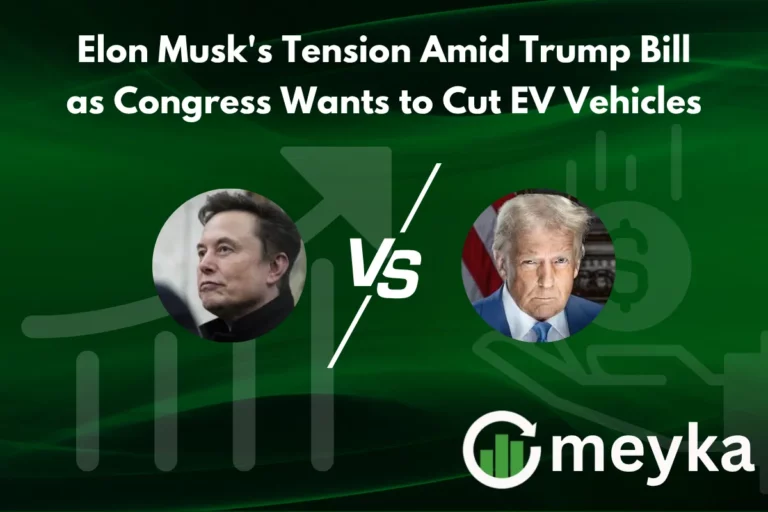Nifty IT Index Struggles with Resistance Amid US Visa Concerns
We’ve been watching the Nifty IT Index closely these last few days. It’s hit a wall, and that wall isn’t just technical. New U.S. visa rules have brought fresh worries for India’s tech sector. On one side, the Index is bumping up against resistance near the 25,500–25,600 range, a zone where gains seem to stall. Analysts say that unless the Index breaks past that cleanly, traders may lean toward profit-taking.
Meanwhile, across the world, the U.S. has raised the fee for fresh H-1B visas to $100,000, a big jump. This policy matters a lot because many Indian IT firms rely on these visas to send staff to handle client work in the U.S.
So we find ourselves at a crossroads. We’re seeing strength in domestic demand and digital transformation promises, but the visa cost shock and resistance levels make the near future look tricky. We’ll explore how these technical limits and policy changes combine to shape what comes next for the Nifty IT Index.
Nifty IT Index at a Glance
- The Nifty IT Index represents India’s largest listed IT service and software companies.
- These firms depend heavily on US clients for revenue. About 57% of the industry’s revenue comes from the US.
- The sector has been under pressure this year. The Index is down ~15% year-to-date, while the broader Nifty 50 is up about 7%.
- Some mid-tier players are more exposed to visa-related risk than the very large companies, because a higher share of their work depends on fresh onsite visas.
Technical Analysis: Resistance Levels in Focus
- We recently saw the Nifty IT index drop ~3-4% in response to the US visa fee announcement.
- Resistance is coming in the range of around 35,500-37,000 for Nifty IT (full index level in terms of IT constituents), levels where prior attempts to rally have been halted.
- On the downside, analysts are watching supports around 25,000-25,300 for Nifty 50 (since IT is a sub-index, broader index support matters). For the IT sub-index, supports might lie near recent lows seen before the visa news.
- The trading pattern suggests a double bottom formation in parts of IT, but many believe that unless the Index clears resistance decisively, we’ll see more sideways or downward moves.
US Visa Concerns and IT Sector Dependency
- On September 19, 2025, the US executive order introduced a $100,000 one-time fee for new H-1B visa applications.
- This fee does not apply to current visa holders or renewals. That clarity eased some panic.
- Indian IT firms use H-1B visas to deploy technical staff onsite in the US. This matters because on-site work often commands higher rates and stronger client trust. Without easy visa access, the cost of doing business can rise.
- The change forces IT companies to decide whether to shift more work back to India (offshoring) or hire more people locally in the US, which is more expensive. Either choice can squeeze margins.
Earnings Impact: How Visa Policies Tie to IT Margins
- Companies like Infosys, TCS, Wipro, etc., have already faced weak growth in recent quarters. The visa fee hike adds another cost layer.
- Margins may shrink if firms absorb the fee without passing it to clients. Some may try to renegotiate contracts or raise their billing, but that takes time and may not always be possible.
- Mid-tier firms with many fresh visa applications are more vulnerable. They may have a lower buffer or less diversified revenue. Large firms could navigate better, thanks to scale and more offshore capacity.
Global Macroeconomic Backdrop
- Demand from US clients is under strain. Inflation, rising interest rates, and uncertainty about a recession are making technology budgets tighter.
- The dollar is strong vs many currencies. For Indian IT companies, this can help revenues in rupee terms (when clients pay in USD), but currency fluctuations add risk.
- Automation, AI, and cloud services continue to be growth levers. But to implement them, firms need both investment and the right policy environment. Sudden visa cost increases may slow down some onsite or hybrid engagements.
Investor Sentiment and Market Outlook
- Investor reaction has been swift. In early trades after the visa fee news, Nifty IT dropped over 3%, with all 10 constituents in the red.
- Analysts are cautious: Some expect more downside unless politicians or regulators provide further clarity. Others see this as an opportunity, buying on dips in strong companies with good cash flows.
- Longer-term tailwinds remain. Digitalization, cloud migration, generative AI, and cybersecurity are still in demand globally. If companies adjust by moving more work offshore or reducing dependency on onsite visas, growth can continue. We from the investor side need to watch for earnings surprises, guidance from company leadership, and how fast adaptation happens.
Possible Breakout Triggers
Here are what might help the Nifty IT Index break its resistance and regain upward momentum:
- Policy Clarification: If US or Indian authorities offer more clarity (for example, exemptions, lower fees for certain sectors, or revised timelines), that may reduce uncertainty.
- Strong Earnings or Guidance: Good quarterly results, especially from large IT firms, can bolster confidence.
- Shift Toward Offshore Delivery: Faster migration of work back to India or other low-cost locations could limit damage from visa rules.
- Improvement in Demand from US & Europe: If demand for software, cloud, and IoT grows faster, clients could absorb higher costs.
Conclusion
We see the Nifty IT Index right now stuck between strong resistance and growing external risks. US visa rules have added a fresh layer of challenge. Still, the core strengths of India’s IT sector, skilled workforce, global reputation, and emerging tech trends, remain intact.
For investors, the near term looks volatile. But if firms adapt well, we could see stabilization or even renewed strength. We should stay alert, favor companies with diversified models, and watch levels. Resistance must be cleared with conviction for a lasting rebound.
FAQS:
Nifty depends on company earnings, foreign investment, government policies, global markets, inflation, interest rates, and investor mood. All these together move the index up or down daily.
The full form of Nifty is National Stock Exchange Fifty. It shows the performance of the top 50 companies listed on NSE across different important sectors of India.
Yes, NRIs can trade on GIFT Nifty through approved brokers. It allows them to invest in Indian markets from abroad with proper account setup and regulatory compliance.
Disclaimer:
This content is for informational purposes only and is not financial advice. Always conduct your research.






